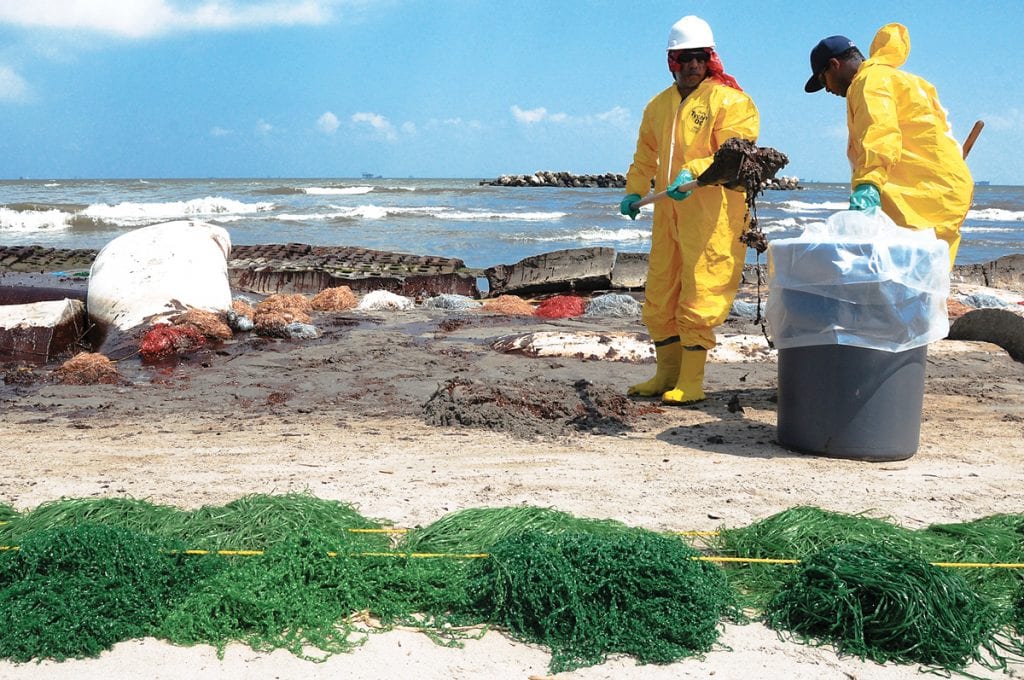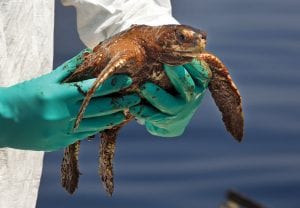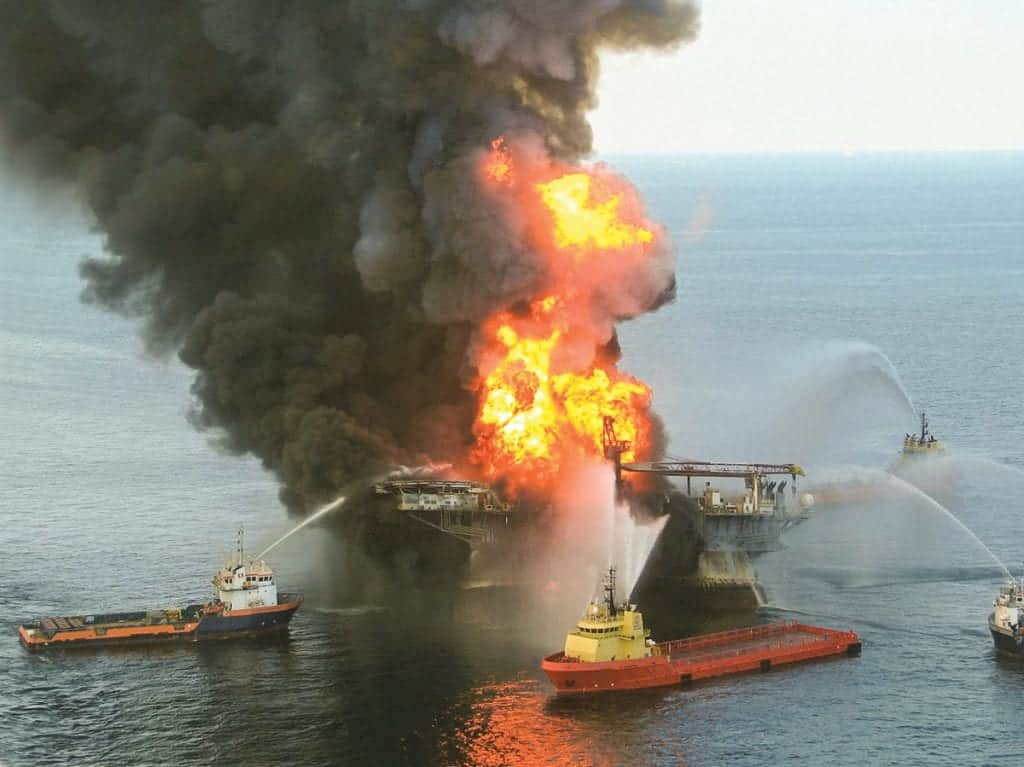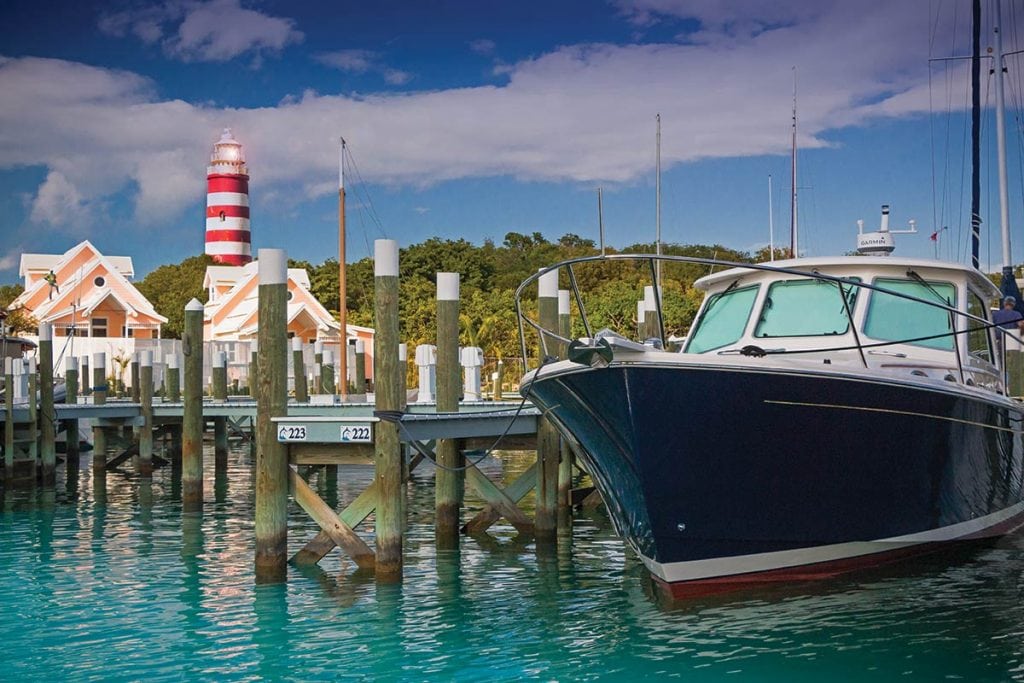Has the Gulf of Mexico recovered from the Deepwater Horizon disaster?
The Deepwater Horizon oil rig, located 42 miles off the Louisiana coast, exploded on April 20, 2010. The initial explosion and subsequent fire killed 11 people. The badly damaged oil well dumped oil and gas into the Gulf of Mexico and did so for 87 days until it was successfully capped. By that time, an estimated 210 million gallons of oil had poured into the Gulf, the worst oil spill in U.S. history.
Some of the oil was at the surface and clearly visible. A variety of government agencies, as well as workers from the owners of the rig (BP and Transocean), tried to contain the spreading oil slick with floating booms. A chemical dispersant was spread to dissolve the oil. Still, over 1,000 miles of coastline from Texas to Florida were affected. The ecological impacts from the surface oil were devastating and the images of dead marine life and seabirds covered with oil remain etched in our memories.
But these were only the visible effects. The damaged wellhead was located 5,000 feet below the water surface. There wasn’t just oil at the surface but all the way down to the seafloor. The oil spill had significant impacts on aquatic life, but it has only been through scientific analysis that the extent of the effects has become known. Much of the research has been funded by BP, which is part of their settlement for the damages produced.
Lasting Consequences of Deepwater Horizon
One study on fish populations used an ecosystem model verified by actual measurements. A 25 to 50 percent decrease in reef fish was noted in areas closest to the spill. Demersal fish (bottom dwellers) were decreased even more by 40 to 70 percent. Predator populations also decreased with fewer prey species. With juvenile fish being affected more, a whole generation may have been lost, and effects may continue with some slower-growing populations taking 30-plus years to fully recover.
A NOAA study concluded that oil contamination can cause cardiac deformities in commercially important species, such as bluefin and yellowfin tuna and mahi-mahi, and this can lead to premature death. Another study on fish shows that species nearest the oil spill were hardest hit with red snapper and southern hake showing the greatest declines. The study showed that oil contamination of fish continues to decline, but no areas studied are free from oil; however, fish populations seem to be recovering.

One NOAA study centered on bottlenose dolphins living in Louisiana’s Barataria Bay. Besides “historically high” death rates, reproductive failure rates reached 80 percent and were directly related to exposure to oil in this area, one of the hardest hit. Bottlenose dolphins in nearby areas of Louisiana and Texas also showed higher death rates.
Overall, in a 2017 NOAA assessment, it was estimated that tens of thousands of birds were killed, perhaps over 100,000 sea turtles died, billions of harvestable oysters were lost, and trillions of newly hatched fish were killed. Of great concern was the effect of the oil spill on the seafloor and the “deep sea” or benthic zone, the layer of very cold water extending down to the seabed. It is a zone of little light and extremely high pressure, but aquatic life does exist there. It is also a region that is extremely difficult to observe, so not much is known about it.
Biodiversity Blight
One study showed that there was a large loss of diversity of soft-bottom infauna (creatures living in the sediment). Another research project in 2014 indicated that some species of microbes in the sediment were eliminated. Microbes are important because they recycle nutrients and are at the base of the food chain. Colonial octocorals were covered with a flocculent material and died. The flocculent material consisted of particles, such as bacteria or phytoplankton, to which oil molecules had attached and then fell to the ocean floor as “marine snow.” Bottom effects were noted up to nine miles from the wellhead site.

Today, over eight years later, there are some encouraging signs. One study indicated that naturally occurring marine microbes and bacteria were breaking down or biodegrading the oil. Various species of fish are making a comeback. Even where die-offs were most pronounced, fish populations have been replenished by migration from unaffected parts of the Gulf. Other studies have shown that smaller, short-lived species with high reproductive rates seem to be rebounding well. But it is still too early to tell the long-term effects on larger species, such as turtles, whales, and dolphins. Longer life spans mean slower reproductive rates, which may be impacted.
Exxon Valdez
Prior to the Deepwater Horizon incident, the benchmark for U.S. coastal waters oil spills was the Exxon Valdez disaster in Alaska in 1989. After running aground and splitting its hull, the tanker discharged nearly 11 million gallons (262,000 barrels) of oil into the pristine waters of Prince William Sound. The oil-covered shorelines and coastal waters were deadly to sea otters, harbor seals and, especially, seabirds (hundreds of thousands died). Fish populations also declined with the loss of salmon and herring eggs estimated in the billions. Many species of fish and birds took a decade to recover, while others took two decades. The herring population still hasn’t recovered.
Although there are some similarities, there are also many differences between the Exxon Valdez spill and the Deepwater Horizon disaster. More than 10 times the amount of oil entered the Gulf. It wasn’t just at the surface; it extended throughout the water column to the seafloor. And the oil itself was different in terms of its composition and toxicity. One similarity is that it is difficult to actually ascertain the effects of these events. To a large extent, preexisting conditions weren’t known in terms of marine life populations and natural fluctuations.
Another problem in determining the long-term effects of a single event is that there are many other negative factors affecting marine life today. In the Gulf (and elsewhere), overfishing has depleted fish populations. Pollution, especially from agricultural area runoff, has produced the “Dead Zone” in the northern Gulf and likely affected other areas. The highly toxic “Red Tide” has both natural and man-made components. Furthermore, ever increasing water temperatures due to climate change have obvious impacts on all sea creatures.
For years, marine biologists have marveled at the resiliency of the Gulf of Mexico, but with multiple negative events, that resiliency is in question.
By Ed Brotak, Southern Boating
December 2018













